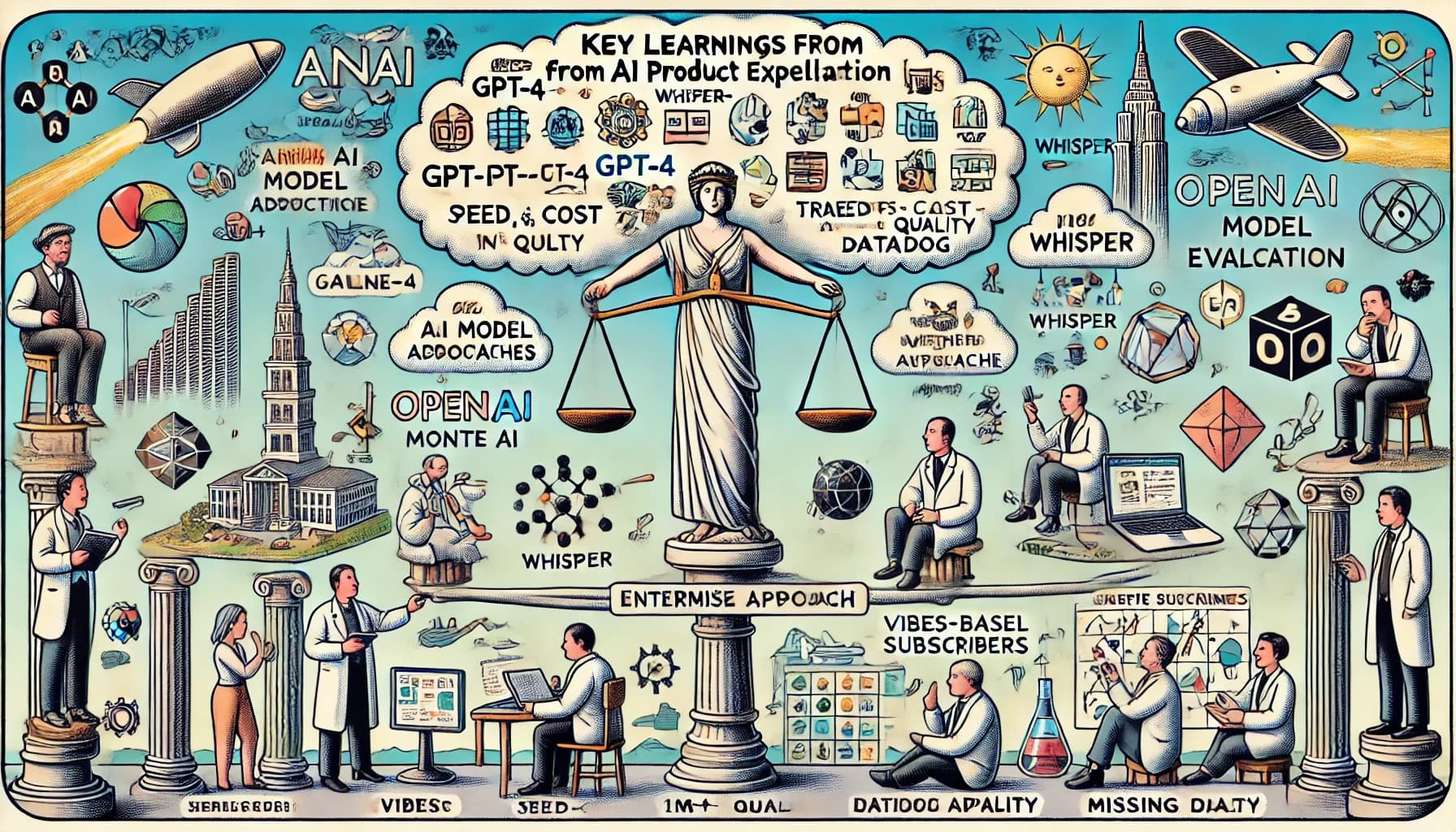The AI Mosaic: Unpacking OpenAI's Portfolio Expansion and the Challenges of Model Evaluation
It's becoming increasingly clear that the landscape of AI models and products is evolving at a breakneck pace. Let's break down some of the key trends and challenges we're seeing in the industry today.
1. The Expanding AI Toolkit: OpenAI's Growing Arsenal
Imagine you're a chef, and suddenly your kitchen is filled with dozens of new, specialized tools. That's essentially what's happening with OpenAI right now. They've gone from offering a single, all-purpose knife (GPT-3) to a full set of specialized cutlery (GPT-4, o1, Whisper, etc.).
This expansion is exciting, but it also presents challenges. Think of it like this:
class AICompany:
def __init__(self):
self.models = []
def add_model(self, model):
self.models.append(model)
if len(self.models) > 10:
print("Warning: Product portfolio becoming complex!")
openai = AICompany()
openai.add_model("GPT-4")
openai.add_model("o1")
openai.add_model("Whisper")
# ... and so onAs our hypothetical AICompany adds more models, it risks hitting a complexity threshold. This is the "product sprawl" challenge that OpenAI and other AI companies are grappling with.
2. The Tradeoff Triangle: Speed, Cost, and Quality
The introduction of models like o1 and o1-mini highlights a fundamental tradeoff in AI: you can have it fast, cheap, or good - pick two. This is reminiscent of the classic project management triangle, but applied to AI models.
Let's visualize this:
Quality
/\
/ \
/ \
/ \
/ \
Speed--------Cost
Each model occupies a different position on this triangle. GPT-4 might be high quality but expensive, while o1-mini might sacrifice some quality for speed and lower cost.
3. The Enterprise AI Boom
The news that ChatGPT has over 1 million paying business subscribers is staggering. It's like we've suddenly discovered that businesses have been secretly learning to fly, and now they're all taking off at once.
To put this in perspective, let's consider a simple growth model:
def adoption_curve(initial_users, growth_rate, years):
users = initial_users
for year in range(years):
users *= (1 + growth_rate)
print(f"Year {year+1}: {users:.0f} users")
adoption_curve(1000000, 0.5, 5) # Assuming 50% annual growthThis exponential growth curve gives us a glimpse into the potential future of enterprise AI adoption. It's not just about the numbers, though - it's about the transformative impact these AI tools will have on business processes and decision-making.
4. The Evaluation Conundrum: Beyond "Vibes"
One of the most intriguing challenges in the AI field right now is how we evaluate these models. We've built incredibly complex systems, but our methods for assessing their performance often boil down to what the industry calls "vibes-based" approaches. It's as if we've created a symphony orchestra but are judging its performance by how it makes us feel rather than any objective musical criteria.
This challenge opens up exciting opportunities for startups and researchers to develop more robust evaluation frameworks. Imagine a system like this:
class AIEvaluator:
def __init__(self):
self.metrics = ["accuracy", "coherence", "relevance", "safety"]
def evaluate(self, model_output):
scores = {}
for metric in self.metrics:
scores[metric] = self.calculate_score(model_output, metric)
return scores
def calculate_score(self, output, metric):
# Complex evaluation logic here
passDeveloping systems like this, which can provide quantifiable, multi-dimensional assessments of AI performance, is one of the key challenges (and opportunities) in the field today.
5. The Competitive Landscape: David vs. Goliath?
The entry of established players like Datadog into the AI observability space, and the opportunities this creates for nimble startups, is a classic tale of innovation dynamics. It's reminiscent of the early days of the internet, where established tech giants and scrappy startups battled to define the future of the web.
This competition is healthy for the ecosystem. It drives innovation and ensures that we're exploring multiple approaches to solving these complex problems. Whether you're a startup founder or a researcher, there's never been a more exciting time to be working in AI.


